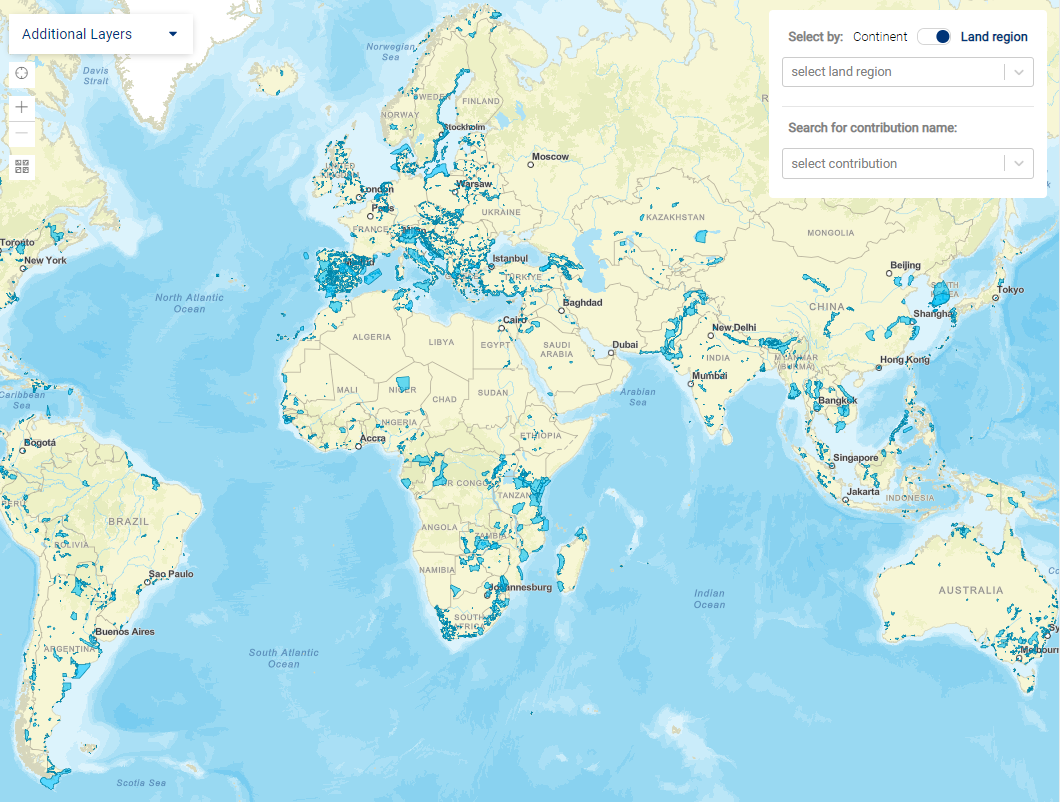The platform allows users to assess how their actions are contributing, across countries and regions, towards global conservation efforts. It supports advocacy and resource mobilisation, networking, coordination and gap analysis (for example, through IUCN National and Regional Committees), as well as delivering the One Programme mandate for IUCN as a Union.
The IUCN Contributions for Nature platform shows how IUCN Members' conservation and restoration actions are helping to achieve global goals. This will be valuable in measuring progress towards the United Nations Sustainable Development Goals, the post-2020 global biodiversity framework and the Paris Agreement on Climate Change, as well as towards the goals established through the IUCN Programme Nature 2030.


All IUCN constituents – non-governmental organisations, indigenous peoples’ organisations, states, government agencies and subnational governments, IUCN Commission members and Secretariat programmes – can add their work to the platform. IUCN’s Regional Offices validate all contributions.
Projects in the IUCN Contributions for Nature Platform, October 2022


The Korean National Institute of Ecology, part of the Ministry of Environment, a State Member of IUCN, contributed one of the first projects to the Platform, focused on the Chinese crested tern, one of Asia’s rarest bird species.
Republic of Korea's National Institute of Ecology
With fewer than 50 mature individuals thought to remain in the wild, the Chinese crested tern is assessed as Critically Endangered on The IUCN Red List of Threatened Species™.

It was only known to live in China until 2016, when it was discovered on the uninhabited Korean island of Yuksando. The National Institute of Ecology is contributing to its conservation through safeguarding and monitoring the nesting site, preventing threats from human intrusions and monitoring invasive alien species.

The IUCN Contributions for Nature Platform not only shows the potential of individual conservation and restoration actions to contribute towards global biodiversity and climate goals, but also shows metrics for entire countries and regions: for example, it shows that Asia has the potential to contribute to halting 25% of global biodiversity loss.
A Chinese crested tern practices flying on Yuksando, Republic of Korea. Video by
Yunkyoung Lee, Republic of Korea National Institute of Ecology.
The Chinese crested tern project is part of the Republic of Korea’s contribution to halting biodiversity loss. The IUCN Contributions for Nature Platform includes reports on the potential of all documented conservation and restoration actions to contribute towards global biodiversity goals (specifically for species extinction risk reduction, using the Species Threat Abatement and Restoration metric) and climate change goals (specifically for mitigation, using the Restoration Barometer).

Global statistics in the IUCN Contributions for Nature Platform.
To date, more than 100 IUCN Member organisations and other constituents have documented more than 4,000 contributions on the platform, among them the Governments of Costa Rica, Guatemala and the Republic of Korea and the Indigenous Peoples' Organisation Members Asociación SOTZ`IL and Agencia. IUCN Non-governmental Organisation Members such as BirdLife International and the World Wildlife Fund have already documented many hundreds of contributions.
The IUCN Contributions for Nature Platform was launched at the IUCN Leaders Forum hosted by the Republic of Korea in Jeju, 13 - 15 October 2022.





